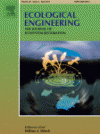| Título | Loss of soil and nutrients by surface runoff in two agro-ecosystems within an Andean paramo area |
| Tipo de Publicación | Journal Article |
| Nuevas Publicaciones | 2011 |
| Autores | Otero, JD, Figueroa A, Muñoz FA, Peña MR |
| Journal | Ecological Engineering |
| Volumen | Volume 37 |
| Ejemplar | Issue 12 |
| Start Page | Pages 2035–2043 |
| Año de publicación | 12/2011 |
| ISBN | 0925-8574 |
| Palabras clave | Paramo; Agro-ecosystems; Surface runoff; Nutrients; Soil particles |
| Resumen | High Andean paramo and cloud forest ecosystems in South America are undergoing transition to agricultural activities such as potato farming and cattle grazing in many areas. There is a lack of data quantifying the contributions of these land uses to soil erosion and nutrients loss. Thus, we assessed soil quality in patches of potato crops and pasture for cattle grazing, and tested soil and nutrient loss from these two land uses in response to heavy rainfall simulation rates (100 mm h−1). Physico-chemical analyses were also carried out in soil and runoff water samples. We found that potato farming had more severe impacts on soil quality, with substantial loss of the silt fraction (low silt levels of 11.9% were found in soil composition) that prevents aggregates formation and increase soil instability. Furthermore, we found that potato farming resulted in much higher soil loss rate (5.67 g h−1) compared to that of pastoral land use (0.61 g h−1). Meanwhile, N and P average losses measured in runoff were 1.22 mg N-NO3 l−1 plus 0.12 mg P-PO3 l−1 for the potato crop, and 0.86 mg N-NO3 l−1 plus 0.09 mg P-PO3 l−1 for the pastures, respectively. We postulate that more effective and continuous rooting prevents soil disaggregation in pasture relative to cropping, and that continuous and extensive foliage protects the soil from rain-splash erosion. Finally, direct relationships appeared between the two agricultural practices evaluated and the loss of soil and nutrients. Thus, if anthropogenic practices such as those studied herein continue their widespread trend observed in recent years in the region, then two of the most important paramo eco-systemic services, that is, water regulation and high water quality supply, may be impaired with all the consequences this brings for human settlements and their livelihoods located down waters. |
| URL | http://www.sciencedirect.com/science/article/pii/S092585741100262X |
